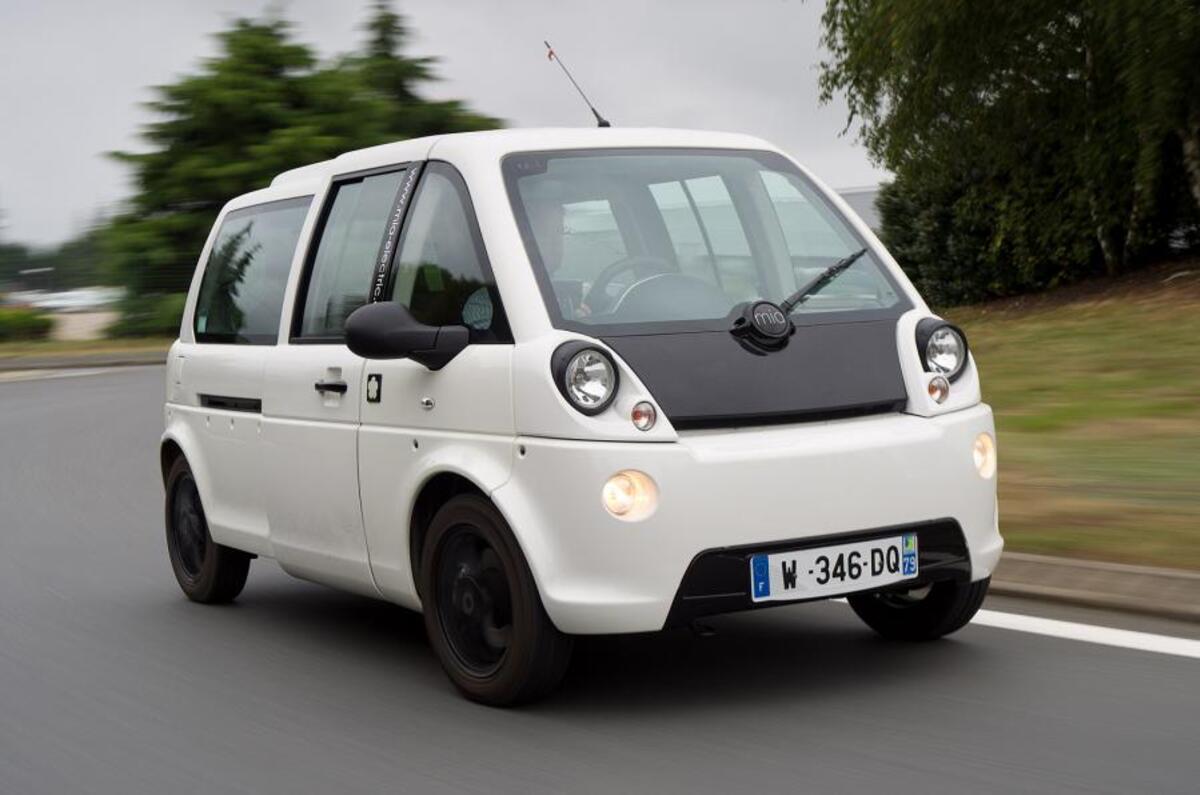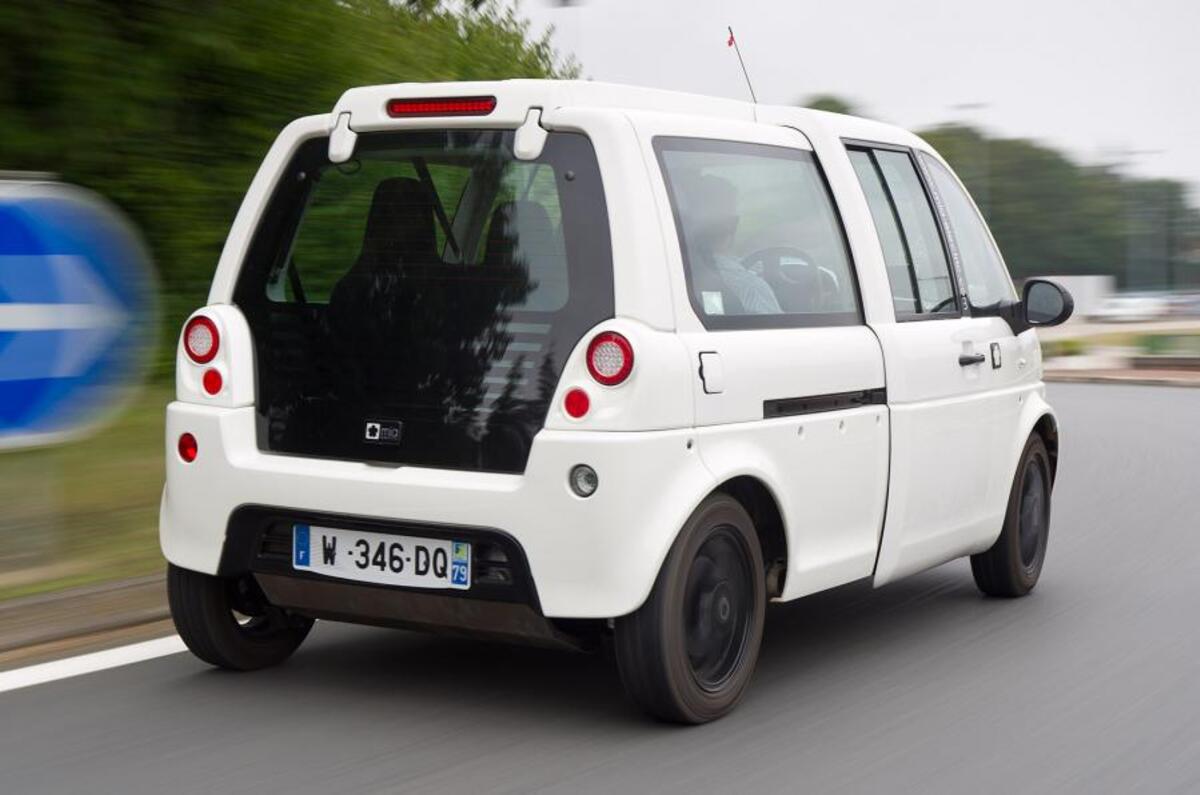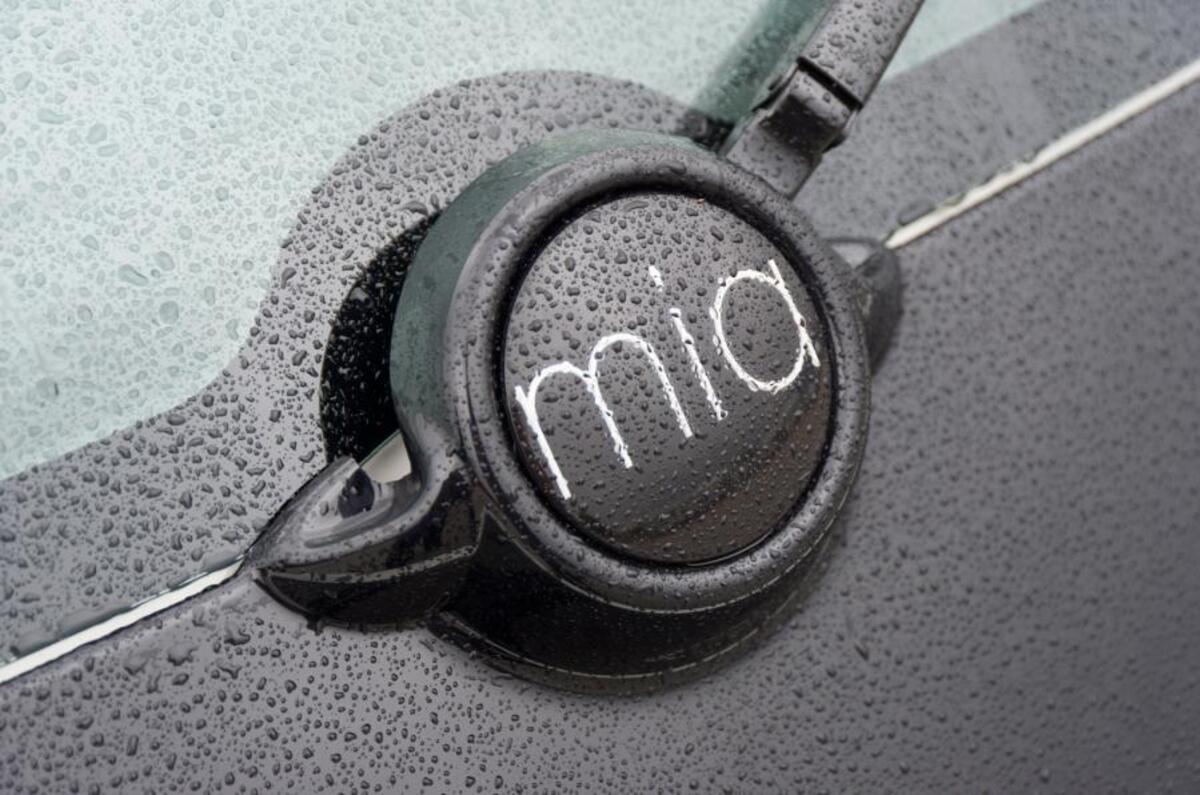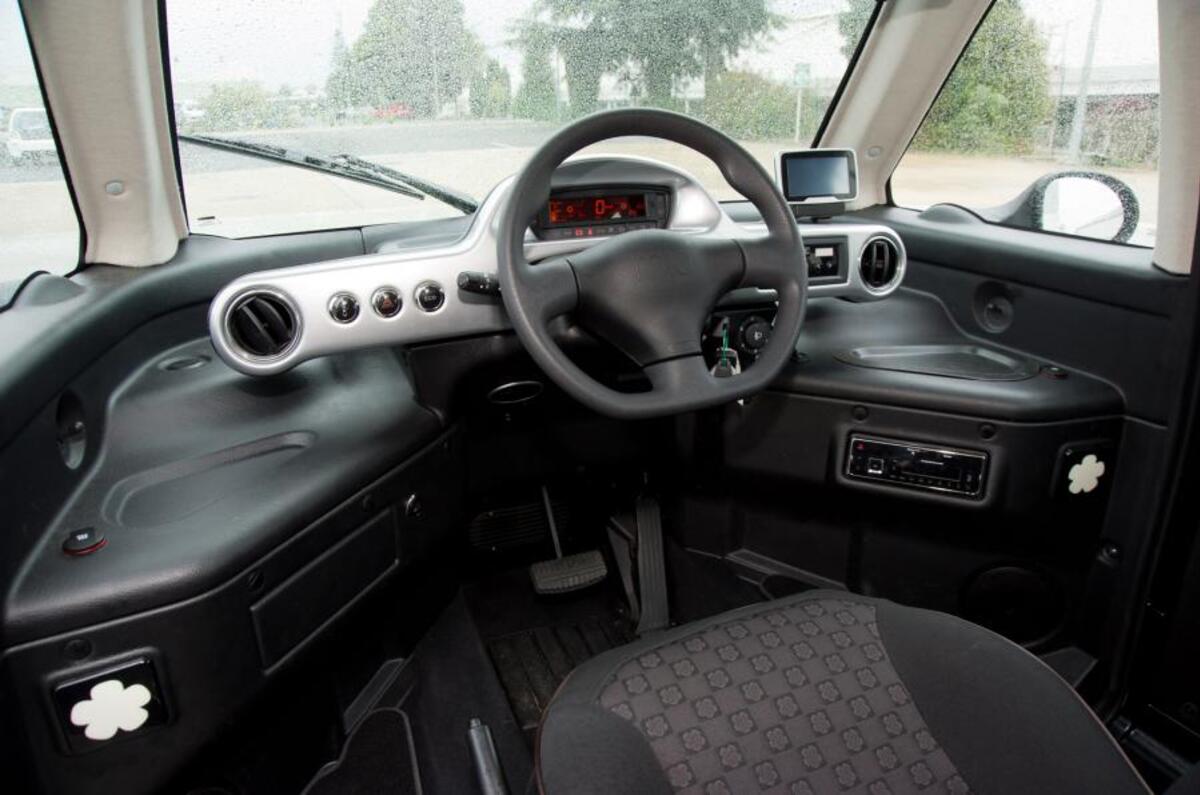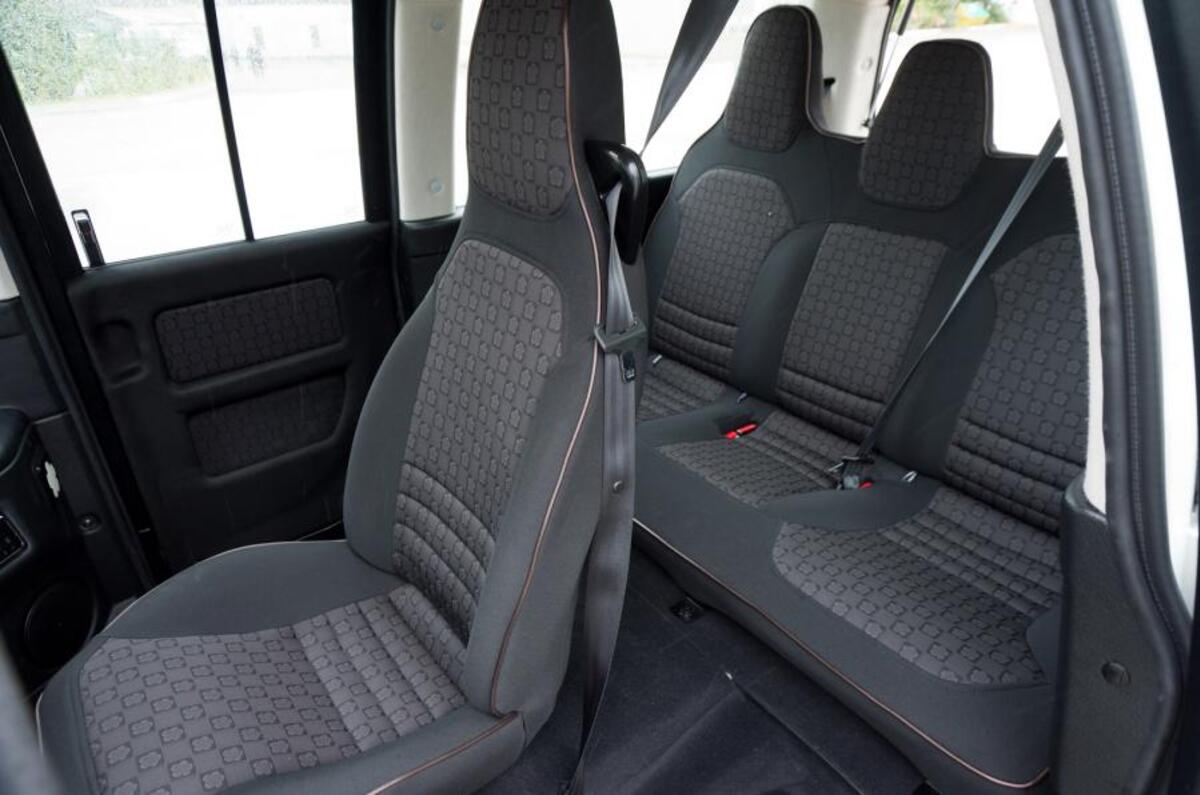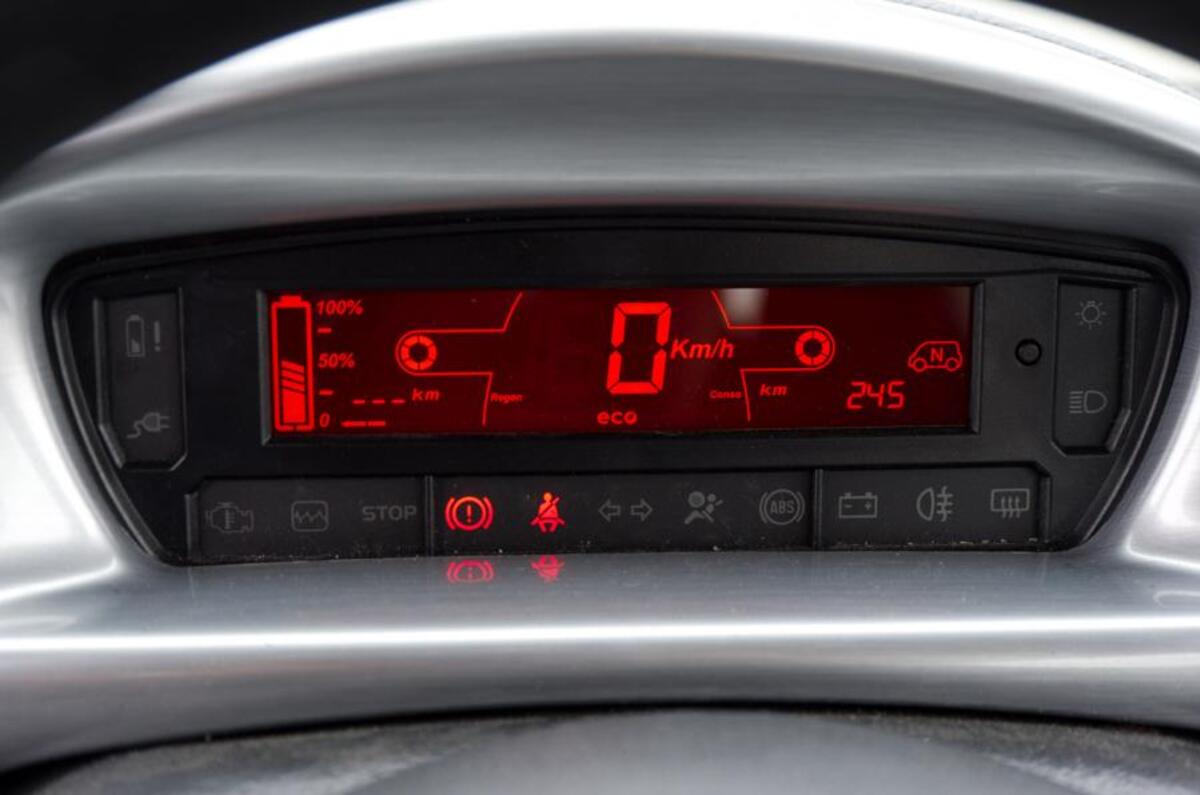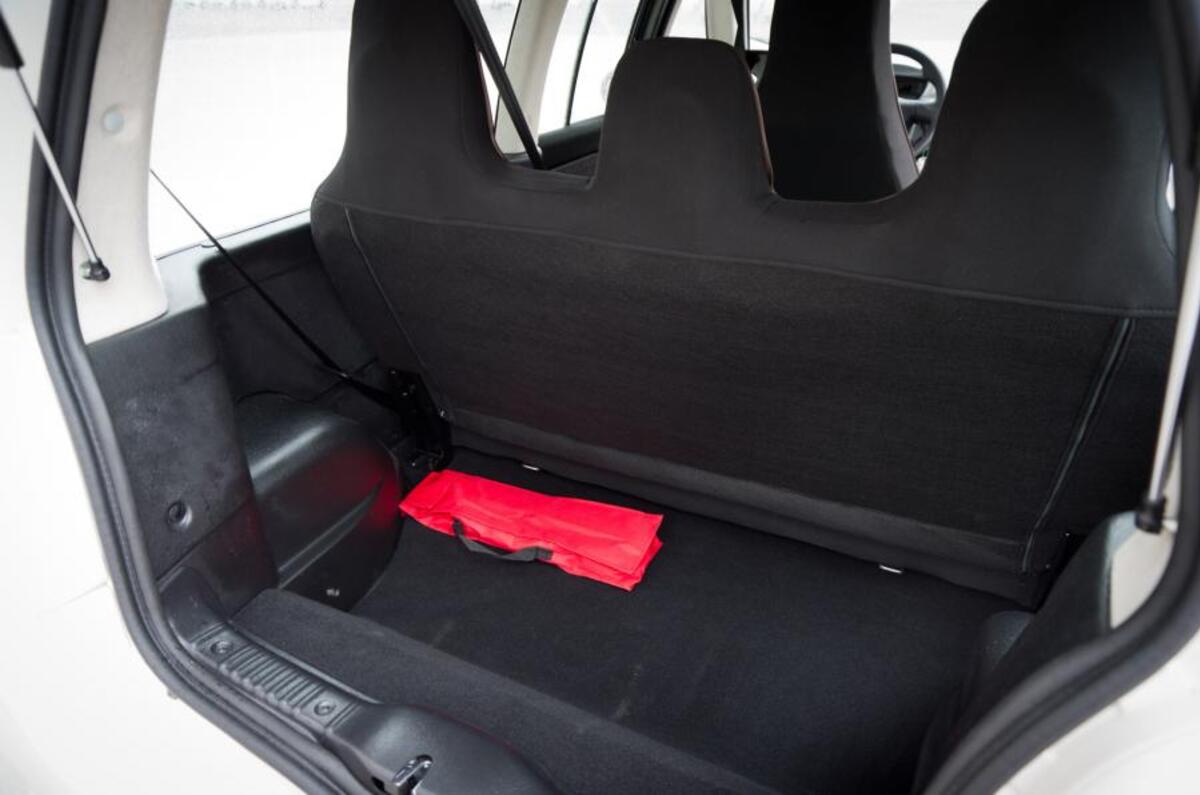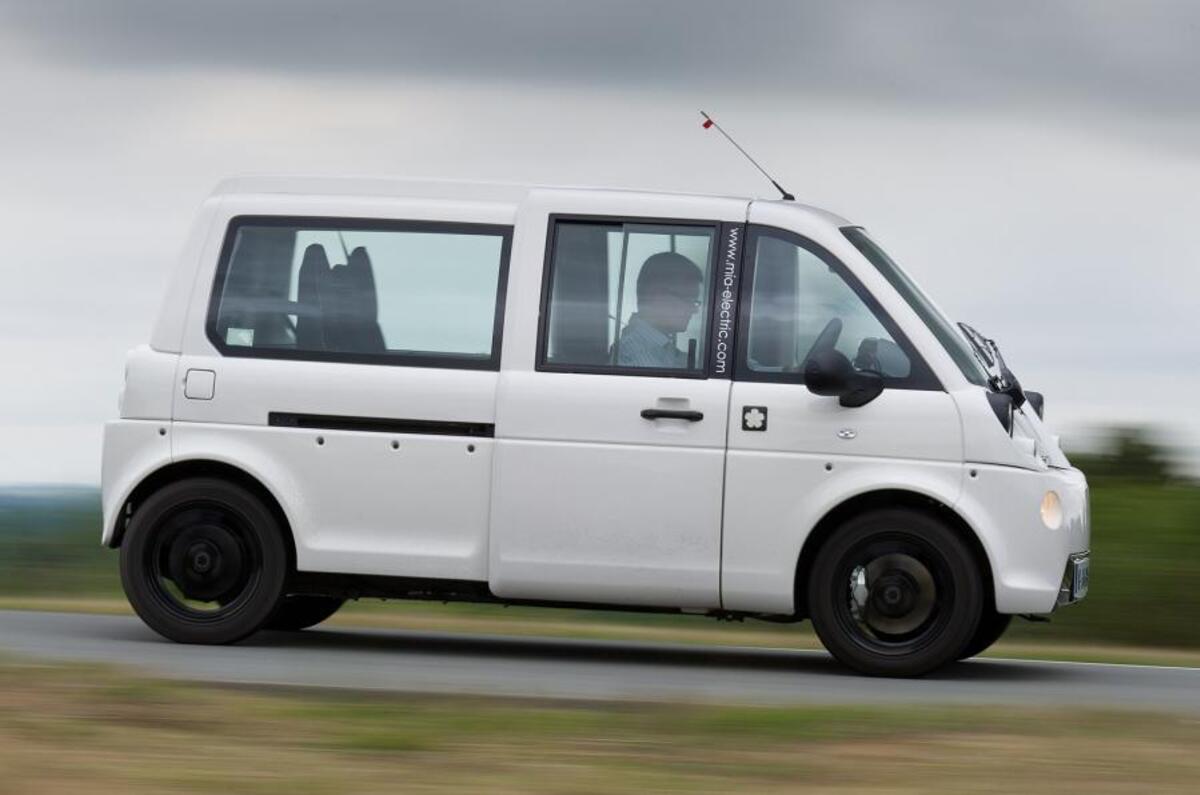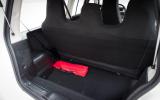This is a three seat electric city car, with a central driving position, twin sliding doors, a rear-mounted electric motor and a steel spaceframe body hung with dent-resistant plastic panels.
It’s built in France by a German-backed company called Mia Electric whose staff include former VW design boss Murat Gunak and ex-Bertone design chief David Wilkie, and it’s in production now at the former factory of coachbuilders Heuliez.
The Mia’s city car role is vital to understanding it – although it weighs only 810kg including batteries, the modest 13bhp electric motor and a range of around 80 miles underline the fact that it is not meant for long distance drives.
Instead, it’s about ease of urban use, zero emissions and low running costs. Ease of use includes maximising the Mia’s interior space, the combination of its arrow-shaped seating layout and clever packaging of the under-boot battery pack and rear suspension producing a three-seater that’s only fractionally longer than the two-seat Smart Fortwo. And rear passengers enjoy exceptional legroom and a boot that’s more than adequate for minor shopping missions.
Unlike the Reva G-Wiz, the Mia is homologated as a car rather than a quadricycle, which means that it must meet more stringent safety tests besides coming with an airbag and ABS as standard. UK models also get a comfort pack that includes an aluminium instrument pod finish, Bluetooth and MP3 compatibility, extra power sockets and auxiliary heating and storage nets.


